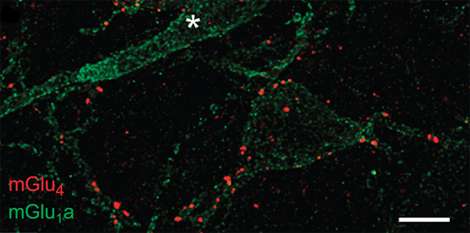Optical control of a neuroreceptor alleviates chronic pain

Pain serves as a valuable warning signal, but when it becomes chronic, pain should be considered as a real disease. An international team including research scientists from the CNRS and INSERM1 has identified and controlled one of the centers associated with chronic pain. This work, published on 20 December 2016 in Molecular Psychiatry, made it possible to relieve the symptoms in mice and demonstrated the ability of the brain to remedy this problem.
While around 20% of the European population has experienced episodes of chronic pain, treatments are only effective in fewer than half of them. This disease is nevertheless associated with modifications to the nervous system. The scientists therefore wanted to understand how the brain modulates physical pain and the affective and cognitive disorders that accompany it: anxiety, loss of positive emotions, hypersensitivity to pain, etc. During this study, they focused on the amygdala, a brain region involved in managing pain and emotions, and on the type-4 glutamate receptor (mGlu4). This is the principal transmitter of pain signals in the nervous system of mammals. This neuroreceptor detects the presence of glutamate and, depending on need, modulates its release at the synaptic level.
In order to study these receptors, scientists generally use a ligand that can activate or inhibit them. The team innovated by creating a specific, photo-controlled ligand, optogluram, whose action on mGlu4 is directed by light. The use of optical fibers then enabled them to achieve very precise control of the activation of this neuroreceptor in a particular region of the brain. The scientists worked on mice that were conscious and free to move around, but suffering from chronic inflammatory pain. By activating optogluram with light, they were able to rapidly and reversibly inhibit their painful symptoms, thus demonstrating that the brains of these mice preserved their ability to counteract these effects. By identifying a modulator that can act on chronic pain, this work raises hopes for the development of new therapies.
More information: C Zussy et al. Dynamic modulation of inflammatory pain-related affective and sensory symptoms by optical control of amygdala metabotropic glutamate receptor 4, Molecular Psychiatry (2016). DOI: 10.1038/mp.2016.223
















